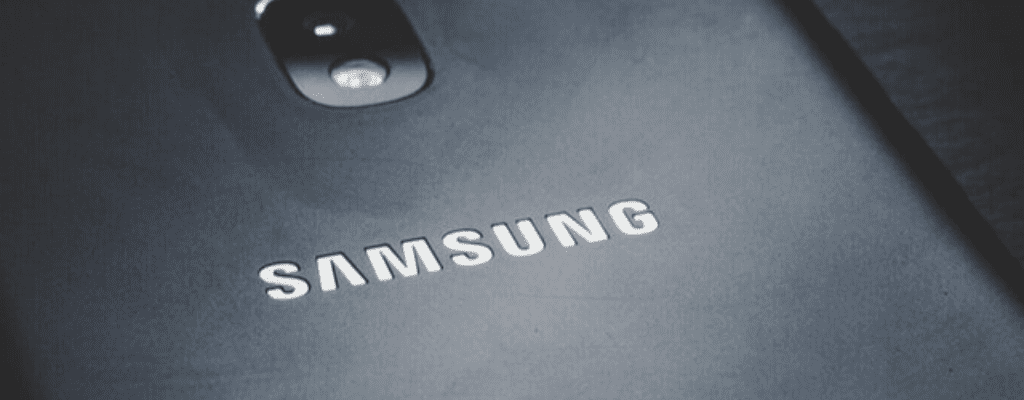Marketing Strategy That Transformed a Business
Despite being one of the world’s largest producers of electronics devices, you may be surprised to find out that Samsung electronics started out primarily as a low-tier manufacturing brand with cheap consumer perception. In this analysis, find out how Samsung’s marketing strategy literally transformed them into the global electronics powerhouse seen today.

A Brief History About Samsung
Back in 1970, Samsung’s electronics unit started out making cheap TV sets for the Sanyo label, but over time, it transformed into an innovative company and has turned out to be a pioneer in developing large flat-screen displays, plasma TVs, and cutting-edge smartphones. But until the mid-1990s, they competed mainly by developing technical components and low-cost manufactured products for bigger brands, such as Dell, Hewlett Packard, and GE. They were also selling other low-cost consumer products – like TVs and microwave ovens under the Samsung brand through discount chains like Walmart.
Until the 1997 Asian market crash, the low-cost-driven competitive strategy worked well for them. At the time, the market for memory chips and other components Samsung supplied to electronics producers saw increased competition, leading to excess capacity, while sales of the Samsung branded products were falling as well. Despite these facts, the company’s CEO Yun Jong-yong voiced that Samsung could produce products that were as good as Sony’s, but because of the brand’s downmarket image, their TV’s would sit at the back of the stores.

What Is Samsung’s Marketing Strategy?
Samsung’s marketing strategy focuses on developing new innovative products that are supported by strong branding and promotional campaigns. Mr. Yun initiated a new competitive strategy with the goal of developing and marketing superior products while also building an image of Samsung as a stylish, high-quality brand worthy of a premium price. The objective was to establish a unique position using technical innovation while designing more appeal to a younger generation, as well as upscale customers around the world. Yun argued that to continue to compete on price would eventually be their downfall.
R&D Into Innovative Tech
Samsung chose to invest heavily in technical innovation and R&D. In order to have a competitive advantage driven by innovation, Samsung had to become a pioneer in developing new technology. During the 90’s, Sony had an advantage in consumer-electronics, but it was rooted in analog technology. The digital world required new products and consequently, the firm shifted substantial resources into developing large-area LCDs, chipsets, and cellphones. Fast forward to the economic crisis of 2008-2009, Samsung spent over 7 Billion dollars for nearly 6% of the unit’s revenue into research and development, and at the time more than 25% of the company’s workforce engaged in R&D.
Product Development & Design
Understanding that cutting-edge technology does not always guarantee market success, Samsung also focused on product development and design. Their goal was to create products that deliver benefits that at least some segment of consumers will consider to be worth the price. Since many product benefits may be subjective – attractive styling, say, or a cool image, or maybe the quality of camera – new product development at Samsung usually involves a team of designers who collaborate closely with the firm’s engineers, manufacturing teams, and marketers.
Brand Building Campaigns
Last and certainly not least, Samsung’s marketing strategy focused on creating a promotional campaign to build Samsung’s brand image. Revamping their marketing efforts was just as critical to the success of a new competitive strategy because even the most technically sophisticated and well design products are likely to fail unless customers know they exist, can acquire them easily, and think they’re worth the money.
Eric Kim was brought in to head a global marketing effort. One of his first moves was to re-organize the firm’s distribution channels to be consistent with the strategic objective of establishing Samsung as a high-quality brand. To start, many of the company’s products were pulled out of the low price discount chains and shifted distribution through big-box electronics stores like Best Buy and online shopping through Amazon.
To ensure consistent marketing communications across all markets, they also consolidated their roster of advertising agencies from 55 down to one global advertising group (WPP), who launched the organization’s first brand-building campaign. Using fashion-forward TV commercials, they created a contemporary sense of style while also promoting the technical sophistication of their products. WPP also made use of promotional tools such as product placements, social media ads, sponsorships, earned media, and online advertising to strengthen the brand.

What Were the Results of Samsung’s Strategic Marketing Decisions?
The revamped competitive strategy and marketing programs that Samsung designed and implemented have been a huge success. The global value of Samsung’s brand increased by more than 200% from 2003 to 2008, and it took over Sony as the most valuable consumer-electronics brand.
As a result, the unit sales grew to $119 billion by 2009, and with the advent of the Samsung Galaxy, revenue has grown into a staggering $218 billion as of 2018. According to the vision statement on its website, Samsung seeks to achieve $400 billion in sales while placing Samsung Electronics’ overall brand value among the global top 5 by the end of 2020. Additionally, it seems they continue to lean into their strengths, as Samsung continues its commitment to furthering innovations in technology and products. For instance, the release of the Galaxy Z Flip and the Galaxy Fold are two of the latest examples of leading innovation coming out of Samsung.

